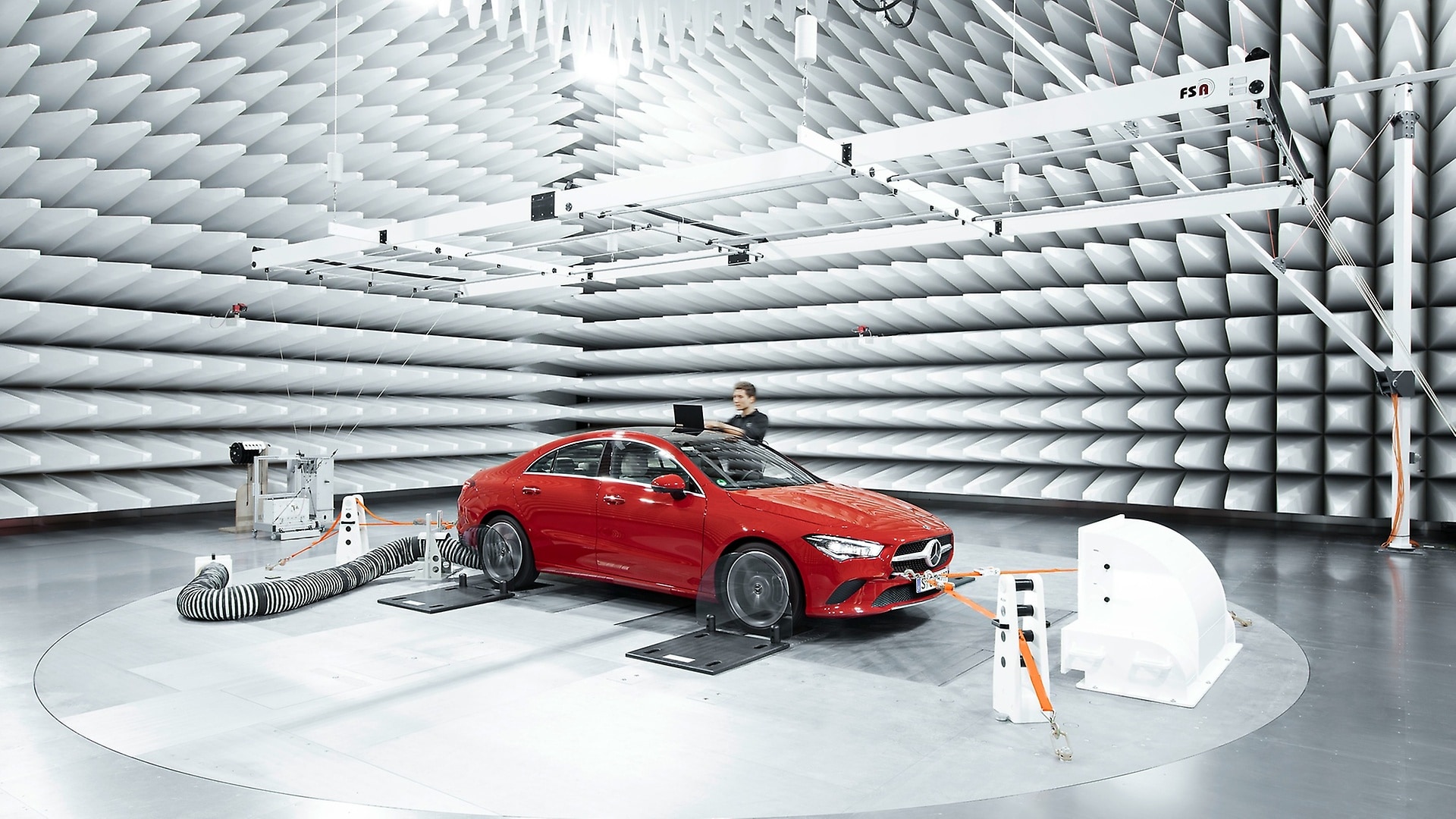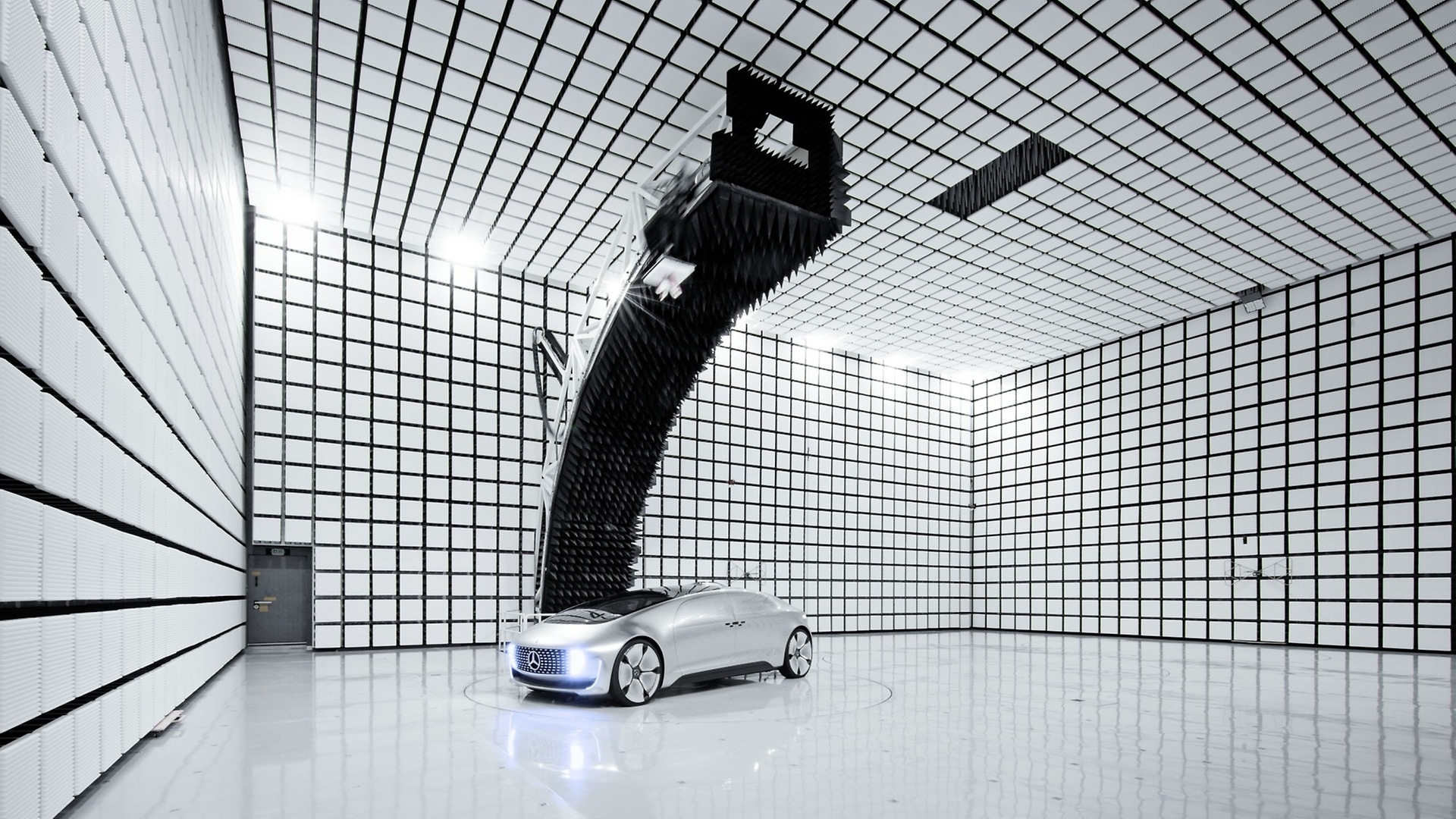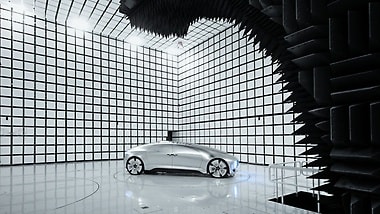Modern vehicles have more than just the classic radio antenna: They are equipped with antennas for radio broadcasts, mobile communications, navigation, WLAN, Bluetooth, rf central locking system. They all need to be developed to achieve an optimal reception quality. Furthermore, the antennas may not interfere with each other.
The new 5G mobile communications standard creates additional requirements. One antenna is no longer enough to physically achieve the future data rates. That is why two or four antennas are usually used simultaneously in order to make the high data throughput possible. In addition to the individual radiation patterns, this requires analysing both the array of the various antennas – the experts refer to it as MIMO: multiple input, multiple output – as well as the receiver in the measurement technology.
Apart from classic antenna measurements, the antenna hall also allows conducting tests of such complex receiver systems as measurements of the data throughput. An important test set-up, because the reception in the moving car depends on many factors, e.g. the number of users in a cell or the location and the density of the transmission towers in a region. Trucks passing by and the buildings as well as the vegetation also can influence the data throughput.
That is why the antenna specialists of Mercedes-Benz, together with experts of the Technical University Ilmenau, developed a method that for the first time allows simulating such scenarios for a vehicle in a reproducible way, and measuring them. All globally available and future frequency bands and services can be emitted in the hall, which is crucial for mobile communications, navigation and for automated driving.
Thanks to the shielding of the hall, there is no interference with the actual radio, TV and mobile communications transmitters in Sindelfingen and the surrounding areas.
,xPosition=0,yPosition=0.5)






,xPosition=0.5,yPosition=0)